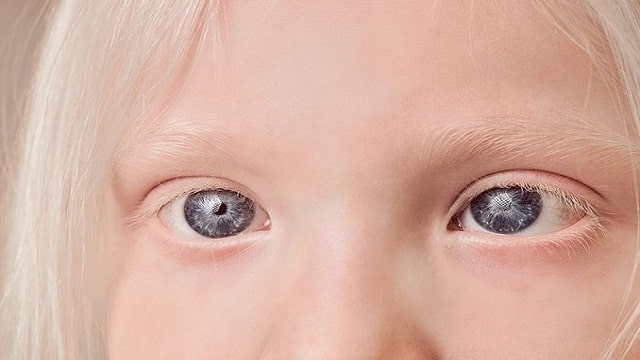Albinism is a disorder in melanin production that causes sufferers to lack melanin or have no pigment at all. This albinism condition will cause the color of the sufferer’s hair, skin, and eyes to look very pale or tend to be white.
Albinism can be suffered by any ethnic group in the world. People who experience albinism are generally more familiar with the term albino. Although albinism cannot be cured for life, this condition does not prevent sufferers from being able to live a normal life.
Albinos Generally Have Problems with Vision
People with albinism usually have a lack of melanin or even no melanin. That is why the skin and hair color of people with albinism looks pale to white. This lack of melanin pigment can also cause the skin of people with albinism to burn easily if exposed to sunlight. This condition should not be underestimated, because it is not impossible that it can lead to serious complications, such as skin cancer. Related Problem: Albinism Can Cause Vision Problems
Although albinism is one of the most harmless genetic disorders, it can still cause problems. The most common disorder is eye disorders ( ocular albinism ). Certain genes inherited from a mother to her child can cause blindness. Although there is no disruption of eye function, the absence of pigment will cause the eyes to be very sensitive to light. This condition will cause abnormal growth of the retina.
Lack of melanin pigment can also change the color of the iris (usually gray or pale blue). In addition, this condition can also cause impaired vision and sensitivity to light. Some examples of eye disorders that can arise due to albinism are nearsightedness, farsightedness, astigmatism, squint, and uncontrolled eye movements from side to side (nystagmus).
This visual impairment can affect the baby’s ability to learn movements, such as crawling or picking up an object. Often, children with albinism appear clumsy due to impaired vision.
Causes of Albinism
Albinism is usually caused by a change or mutation in one of the genes that is responsible for helping melanin production by melanocyte cells found in the eyes and skin. As a result of this gene change, melanin production is disrupted, either drastically reduced or absent altogether. Changes to genes will be passed down in various patterns.
There are two types of albinism based on the symptoms that appear, namely ocular and oculocutaneous albinism. Ocular albinism affects the eyes and vision of the sufferer. Ocular albinism also causes no or minimal changes in skin and hair color. While oculocutaneous albinism is the most common type of albinism. This condition affects the hair, skin, eyes, and vision.
Diagnosis of Albinism
Albinism can be diagnosed directly by a doctor since the sufferer is born, through their physical characteristics (hair, skin, and eye color). To find out if there is a problem with vision, an eye specialist can perform several examinations. For example, an examination using a special tool called a slit lamp, checking the pupils, examining the shape of the cornea to diagnose cylinder, examining the direction of the eye’s vision to diagnose strabismus, and examining eye movements to diagnose nystagmus.
Albinism cannot be prevented. For those of you who have a family history of albinism, have children with albinism, or are albino yourself, it is recommended to have a discussion with a doctor.

